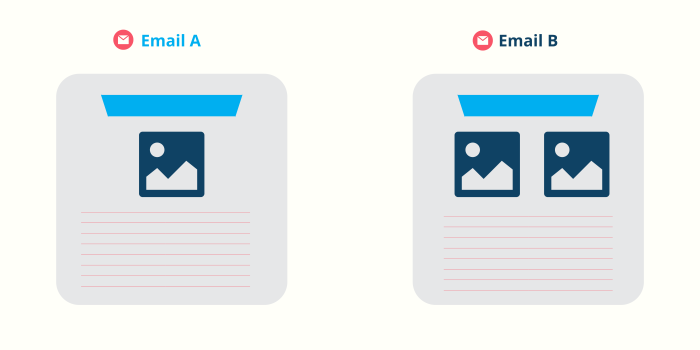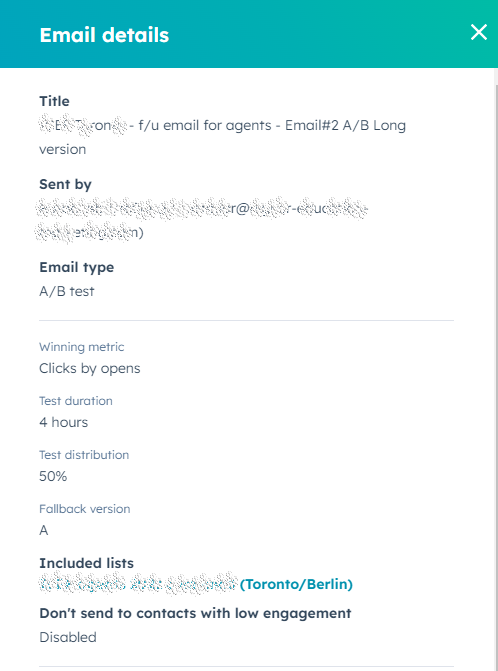In today’s crowded market, email marketing is one of the most effective ways schools reach and convert prospects. Through segmentation and targeting, email marketing allows schools to connect with prospective students and ensure they get the right message no matter where they are along the enrollment funnel. A solid email marketing strategy can guarantee that a school’s most valuable contacts will turn into successful students.
If your school already uses email marketing, you may have wondered what kind of email might easily capture your prospects’ attention. Luckily, A/B testing in education email marketing allows schools to try different elements to understand what performs better with their audiences and what helps them reach their goals more effectively. Here, we’ll walk you through A/B testing email marketing basics and outline some best practices your school can use to stand out.
What is A/B Testing in Email Marketing?
A/B testing is a method commonly used in different areas of marketing to compare two versions of an element and determine which one is the most successful in achieving specific goals. For instance, A/B testing can be done to determine what type of headline drives more prospects to open an email or what kind of visuals perform better when it comes to getting more clicks on an online ad.

Do you need help managing your school’s email campaigns? At HEM, our specialists can help you set up, configure, and deliver your email marketing efforts through your school’s CRM and marketing automation system. Click here for more information.
In education, email marketing A/B testing involves sending two versions of the same email to different audience segments. For example, you can do A/B testing by sending the same email content but using two different headings or graphics to see which element appeals the most to your prospects. After analyzing the results obtained, schools can determine which version is the most effective at reaching their target audience and improving engagement metrics. This can also help schools understand which elements perform better with prospects at different funnel stages–as different headings and CTAs might be required for each stage.
Typically, A/B testing email marketing entails a few simple steps:
- Identify the variable your school wants to test.
- With your chosen variable in mind, create two different versions of an email, each with a different element.
- Using a CRM or email marketing platform, send these variations randomly to different email list segments.
- Track the performance metrics of each email version. Pay attention to metrics like open rates, click-through rates, and conversion rates.
- Once a significant amount of data is collected, compare the performance metrics of the different versions.
Example: Platforms like HubSpot, Mailtrap, Campaign Monitor, and MailChimp, among others, will guide you through the steps needed to launch your test.

Why is A/B Testing Important? Some Reasons to Experiment With A/B Testing Email Marketing
Now that you understand the basics of A/B testing, you might wonder about the importance of email marketing testing in education. Since prospective students are likely to receive emails from different institutions, ensuring that your institution’s email captures your prospects’ attention is a must to stand out from the rest. And here’s where A/B testing plays a significant role! A/B testing is a must because it allows you to identify which elements (heading, CTA, image, copy, etc.) resonate the most with prospects and are more likely to motivate them to go down the enrollment funnel, enabling you to personalize your emails more effectively to boost student recruitment.

In addition, A/B testing gives your school an insight into what is not working, allowing you to improve specific elements of your email campaign and get a higher ROI by ensuring that resources are allocated to strategies that yield the best outcomes. That’s why analyzing the results obtained from a test is just as important as conducting it, as it can help schools make informed decisions based on evidence rather than relying on assumptions or guesswork.
While A/B testing email marketing can seem like an endless exercise. At times, as seen in the example below, results can be inconclusive, doing it often and implementing the variants that work encourages schools to keep their content fresh and appealing. It fosters a culture of continuous improvement and allows schools to mitigate risks by testing changes on a smaller scale before rolling them out.

Pro tip: As seen, the results obtained from this test conducted by HEM were inconclusive. While this might not give education marketers a clear picture of what elements are performing best, segmenting data to understand the results obtained for each metric is recommended. If necessary, schools can perform the test again, but before education, marketers should check to see if the sample size is large enough to show significant results.
Common A/B Testing Variables Your School Should Try
While the list of variables you can test for can get long, schools must know what to test for when working on their email marketing testing strategy.
Here are some of the most common variables your school should keep in mind:
- Subject lines: You can think about subject lines as a hook that grabs the recipient’s attention and entices them to open the email. A good subject line should be concise, specific, and relevant to the content of the email. It should also create a sense of urgency without being misleading. You can test elements such as length, copy, tone, emoji use, capitalization, first-person versus second-person, etc.
- Images: We live in an era in which visuals play a significant role when it comes to choosing. You can experiment with different types of visuals, such as photos versus graphics, one image versus multiple images, or images versus no image at all. You can also use more colourful images and play with image placement.
- CTA: Your call to action will motivate prospective students to take your desired action. It should be clear and concise and highlight the unique benefits of your institution. We recommend using action-oriented language and following CTA best practices to create a sense of urgency and encourage your contacts to act now. Timing:
- Time: Understanding when your prospects are more likely to open an email is essential. Sending emails at different times of the day to test what their preferences are will ensure that your emails aren’t ignored.
- Body copy: The body of your emails is where you communicate your message, convey your unique selling points, and drive action from your recipients. To write attractive email copy, you must understand what your prospects seek. When it comes to testing, you can try different lengths and tones or place CTAs at different places, as seen in the example below.

- Design and layout: You want your emails to grab your prospects’ attention immediately. If your email layout is not friendly or appealing, prospects will likely close the email without reading it. Testing different layouts will help you determine where elements should be placed.
Pro tip: A/B testing email marketing can only yield results if you understand why and how you are testing these variables. This will help your school avoid spam triggers to keep emails out of spam filters.
Email Testing Best Practices For Schools
Given that A/B testing can take some time and resources, schools should follow the following email testing best practices to ensure that testing yields results when performed.
- Identify your goals: Like any other marketing effort, setting some goals should be the first step of your testing exercise. Outlining why you are performing a test will guide all the following steps, ensuring that the test is designed to yield successful results. You can ask yourself what you want to achieve, why you are choosing one variable over another, and what you expect to get from the test.
- Determine which key performance indicators (KPIs) you will measure: Before you run an email marketing test, it is important to determine which KPIs you will look at, such as open rate, click-through rate, conversion rate, etc. Once you have established your KPIs, decide on the level of statistical significance you’re aiming for (for instance, a 95% conversion rate).
- Set your parameters: Once you know your goal, you should identify who will receive the test, how long it will run, how you will split your audience, and what metrics you will measure. These parameters should speak to your desired results.
- Test one variable at a time: Though testing different variables simultaneously might sound like a good idea, this can make results confusing as you won’t be able to tell precisely why your contacts are clicking the link or opening the email. Testing one variable at a time will allow you to get accurate results.
- Calculate the right sample size: To get statistically significant data, you must calculate the right sample size for your test. You can use online sample size calculators such as Evan Miller’s sample size calculator, Zettasphere’s calculator, HubSpot’s A/B Testing Kit, or AB Tasty, or employ statistical formulas to calculate the minimum sample size needed for your A/B test.
- Calculate your timeframe: While your timeframe will change depending on your objectives, you want to ensure that the timeframe you establish is realistic and that you will get outcomes that exhibit statistical significance. Consider weekdays versus weekends, peak versus off-peak times, and time zone differences, and keep in mind that having a timeframe that is too short might give you misleading results.
- Keep testing! A/B testing email marketing frequently can help your school stay agile in a changing digital landscape, adapt to evolving audience preferences, and maintain a competitive advantage.







